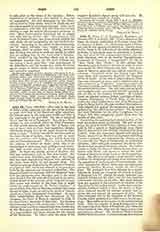

John IX, POPE (898-900).—Not only is the date of John’s birth unknown, but the date of his election as pope, and that of his death are alike uncertain. He became pope in the early part of 898, and died in the beginning of the year 900. He was a native of Tivoli, and the son of Rampoald. Becoming a Benedictine, he was ordained priest by Pope Formosus.
At this period factions filled the city of Rome, and one of them tried to force their candidate, Sergius, Afterwards Sergius III, on the papal throne in opposition to John. Perhaps because he was favored by the ducal House of Spoleto, John was able to maintain his position, and Sergius was driven from the city and excommunicated. With a view to diminish the violence of faction in Rome, John, who is acknowledged to have been both intelligent and moderate, held several synods in Rome and elsewhere (898). In them the ghastly synod of Stephen (VI) VII was condemned, and its Acts were burnt. reordinations were forbidden, and those of the clergy who had been degraded by Stephen were restored to the ranks from which he had deposed them. The barbarous custom of plundering the palaces of bishops or popes on their death was ordered to be put down both by the spiritual and temporal authorities. The Synod of Rome also declared itself for Emperor Lambert and against his rival Berenger, and at the same time decided that the pope-elect was not to be consecrated except in the presence of the imperial envoys.
This canon was decreed in the hope that it might lessen the evils caused by the Roman factions. A synod which John held at Ravenna decreed that steps should be taken to put an end to the deeds of violence which were being perpetrated everywhere. To keep their independence, which was threatened by the Germans, the Slays of Moravia appealed to John to let them have a hierarchy of their own. Not heeding the hectoring letters with which some of the German bishops endeavored to dissuade him from hearkening to the Moravians, John sanctioned the consecration of a metropolitan and three bishops for the Church of the Moravians. On John’s coins the name of the emperor (Lambert) figures along with his own. He was buried just outside St. Peter’s.
HORACE K. MANN

